Spider Webs On Grass - Dealing With Dollar Spot Fungus On Lawns
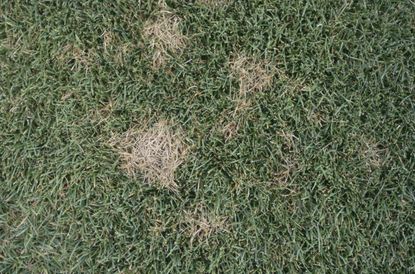

Spider webs on grass that is damp with morning dew may be a symptom of a bigger problem called dollar spot fungus. The branching mycelium of dollar spot fungus looks like spider webs or cobwebs on morning grass, but unlike spider webs, dollar spot mycelium disappears when the dew dries. Let's learn more about these webs on lawn grass.
Dollar Spot Fungus on Lawns
The fungus gets its name from the brown spots it causes in the lawn. They begin about the size of a silver dollar, but you may not notice them until they grow and spread into large, irregularly shaped areas. The spots resemble those caused by drought, but more water only makes the problem worse. The organisms that cause dollar spot fungus on lawns (Lanzia and Moellerodiscus spp. - formerly Sclerotinia homoecarpa) is always present, but they only take hold and begin to grow when the lawn is under stress. Inadequate nitrogen is a primary cause, but drought, overwatering, improper mowing height, heavy thatch and poor aeration can all contribute to the disease. In the presence of stress, warm days and cool nights encourage rapid fungal growth. Good lawn maintenance is the best way to fight dollar spot fungus. Fertilize regularly using the amount recommended on the fertilizer label. Water weekly in the absence of rain. Apply the water early in the day so that the grass has time to dry before nightfall. Remove excess thatch to allow water and fertilizer to get to the roots. Fungicides can help treat dollar spot fungus, but they are only recommended when good lawn maintenance fails to get it under control. Fungicides are toxic chemicals that you should use with caution. Choose a product labeled to treat dollar spot disease and carefully follow the instructions.
Grass Spider Webs on Lawn
If you see webs on lawn grass despite proper lawn maintenance and without the characteristic brown spots, you may have grass spiders. Grass spider identification is easy because the spiders seldom leave their webs. Look for cone-shaped spider webs in the grass. The spiders like to hide in a part of the web sheltered by fallen leaves, rocks or debris. They quickly run to another part of the web when disturbed, and they can deliver a painful, but otherwise harmless, bite. Grass spiders are beneficial because they catch and eat insects that feed on lawn grass.
Gardening tips, videos, info and more delivered right to your inbox!
Sign up for the Gardening Know How newsletter today and receive a free download of our most popular eBook "How to Grow Delicious Tomatoes."

Jackie Carroll has written over 500 articles for Gardening Know How on a wide range of topics.
-
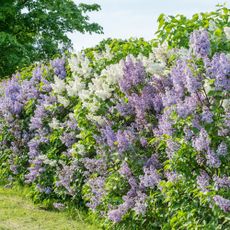 7 Fragrant Hedge Plants For Heavenly Floral Boundaries
7 Fragrant Hedge Plants For Heavenly Floral BoundariesA fragrant hedge will boost your home's curb appeal, providing a feast for the senses with glorious flowers and a delicious aroma.
By Mary Ellen Ellis
-
 Help Your No-Dig Garden Succeed: Our Guide To No-Dig Gardening
Help Your No-Dig Garden Succeed: Our Guide To No-Dig GardeningOur guide to no-dig gardening explains a movement whose time has come. Learn no-till gardening methods to enrich and balance the health of your soil.
By Teo Spengler
-
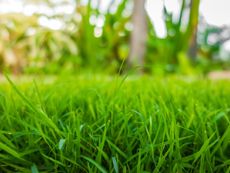 Sustainable Turf Species For A Greener Lawn
Sustainable Turf Species For A Greener LawnClick here for some of the most sustainable types of turf grass you can grow for an eco-friendly lawn.
By Bonnie L. Grant
-
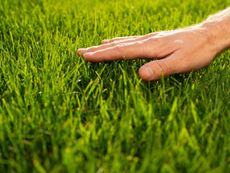 How To Grow A Sustainable Lawn
How To Grow A Sustainable LawnAdjust your thinking about a perfect green lawn and consider more sustainable methods. Click here to learn how.
By Mary Ellen Ellis
-
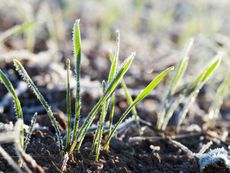 Will Frost Kill Grass Seed And How To Help New Turf Survive
Will Frost Kill Grass Seed And How To Help New Turf SurviveLearn how to help your newly sown grass survive frost and freezing weather.
By Amy Grant
-
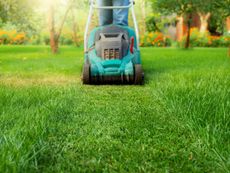 Lawn Problems That Aren’t Really Problems
Lawn Problems That Aren’t Really ProblemsYour lawn may not require as much work as you think. Learn which common problems aren’t really problems.
By Teo Spengler
-
 Why A Manual Push Mower Is Good For You And The Environment
Why A Manual Push Mower Is Good For You And The EnvironmentReel mowers are making a comeback, but why? Click here to learn about reel mower pros and cons.
By Amy Grant
-
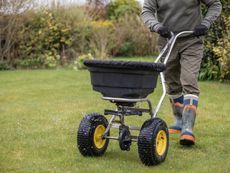 Fertilize Grass In Fall For A Lush Lawn In Spring
Fertilize Grass In Fall For A Lush Lawn In SpringFor everything you need to know about fertilizing your lawn in the fall, click here.
By Susan Albert
-
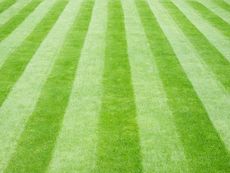 Tips For Mowing Stripes In Lawn
Tips For Mowing Stripes In LawnWouldn’t it be great to have stripes in your lawn like a sports field? Learn how here.
By Susan Albert
-
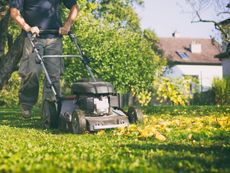 Late Summer Lawn Care Checklist
Late Summer Lawn Care ChecklistPlan to do some late summer care and maintenance of your lawn so it will be healthy and beautiful in the spring. Here are some tips.
By Laura Miller